SNAP23
-
Official Full Name
synaptosomal-associated protein, 23kDa
-
Overview
Specificity of vesicular transport is regulated, in part, by the interaction of a vesicle-associated membrane protein;termed synaptobrevin/VAMP with a target compartment membrane protein termed syntaxin. These proteins, together with;SNAP25 (synaptosome-associated protein of 25 kDa), form a complex which serves as a binding site for the general;membrane fusion machinery. Synaptobrevin/VAMP and syntaxin are believed to be involved in vesicular transport in most,;if not all cells, while SNAP25 is present almost exclusively in the brain, suggesting that a ubiquitously expressed;homolog of SNAP25 exists to facilitate transport vesicle/target membrane fusion in other tissues. The protein encoded;by this gene is structurally and functionally similar to SNAP25 and binds tightly to multiple syntaxins and;synaptobrevins/VAMPs. It is an essential component of the high affinity receptor for the general membrane fusion;machinery and is an important regulator of transport vesicle docking and fusion. Two alternative transcript variants;encoding different protein isoforms have been described for this gene. -
Synonyms
SNAP23; synaptosomal-associated protein, 23kDa; synaptosomal associated protein, 23kD; synaptosomal-associated protein 23; HsT17016; SNAP23A; SNAP23B; vesicle-membrane fusion protein SNAP-23; SNAP-23;
- Recombinant Proteins
- Cell & Tissue Lysates
- Protein Pre-coupled Magnetic Beads
- Chicken
- Human
- Mouse
- Rat
- Rhesus Macaque
- E.coli
- HEK293
- HEK293T
- Mammalian Cell
- Mammalian cells
- Flag
- GST
- His
- His (Fc)
- Avi
- Strep
- His|T7
- Myc
- DDK
- N/A
- N
- No tag
- Background
- Quality Guarantee
- Case Study
- Involved Pathway
- Protein Function
- Interacting Protein
- SNAP23 Related Articles
- SNAP23 Related Research Area
What is SNAP23 protein?
SNAP23 (synaptosome associated protein 23) gene is a protein coding gene which situated on the long arm of chromosome 15 at locus 15q15. The protein encoded;by this gene is structurally and functionally similar to SNAP25 and binds tightly to multiple syntaxins and;synaptobrevins/VAMPs. It is an essential component of the high affinity receptor for the general membrane fusion;machinery and is an important regulator of transport vesicle docking and fusion. The SNAP23 protein is consisted of 211 amino acids and its molecular mass is approximately 23.4 kDa.
What is the function of SNAP23 protein?
SNAP23 protein is a membrane binding protein widely expressed in human body, mainly localized in the cell membrane and endoplasmic reticulum. It plays an important role in a variety of biological processes, including cell proliferation, differentiation, migration, and apoptosis. Specifically, SNAP23 protein is involved in regulating cell cycle progression, influencing cell morphology and motility, mediating intracellular material transport, and participating in immune response.
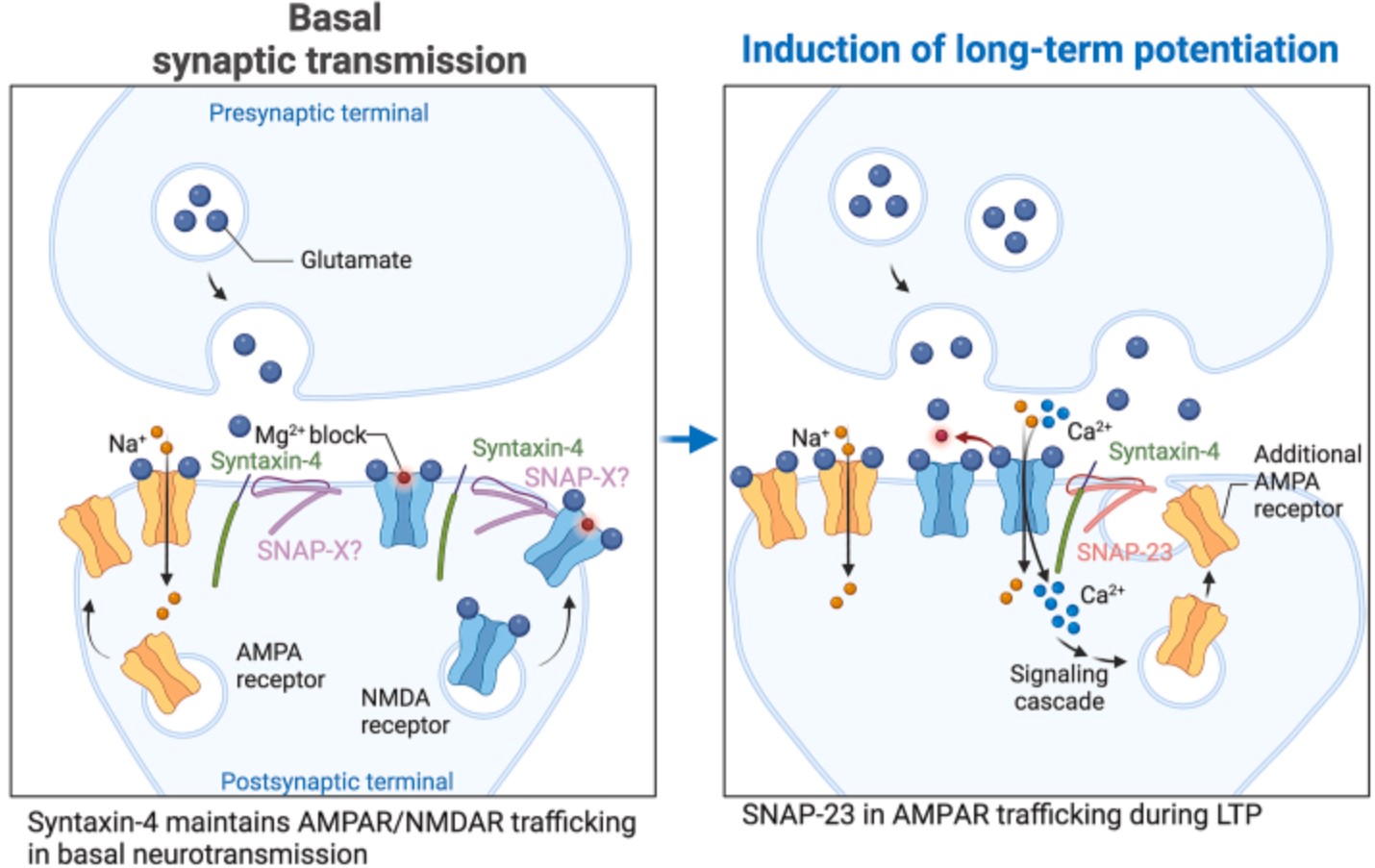
Fig1. Left panels indicate the presynaptic and postsynaptic terminal under basal synaptic transmission conditions. Right panel indicates synaptic changes following induction of long-term potentiation (LTP). (Mengjia Huang, 2023)
SNAP23 Related Signaling Pathway
SNAP23 is a membrane fusion-related protein involved in multiple signaling pathways. It plays a role in many physiological processes such as intracellular transport, cell polarity, intracellular vesicle fusion, and insulin-mediated glucose transport. In addition, SNAP23 is involved in the neurotransmitter release process with certain proteins such as Syntaxin and VAMP.
SNAP23 Related Diseases
SNAP23 plays an important role in the nervous system and has been linked to a variety of neurological diseases. The most common condition associated with SNAP23 is myasthenia gravis, an autoimmune disorder that causes muscle weakness and fatigue. In addition, SNAP23 mutations have also been linked to diseases such as Crohn's disease and multiple sclerosis.
Bioapplications of SNAP23
SNAP23 protein has important application value in drug screening and pharmacodynamic evaluation. By interacting with target molecules, the SNAP23 protein can be used to screen potential drug candidates and evaluate their effectiveness in disease treatment. It can even be used as a diagnostic reagent.
High Purity
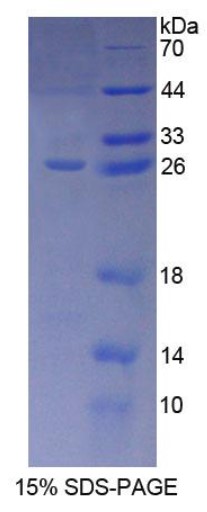
Fig1. SDS-PAGE (SNAP23-8116H) (PROTOCOL for western blot)
.
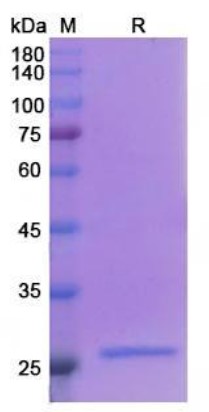
Fig2. SDS-PAGE (SNAP23-6661H) (PROTOCOL for western blot)
Case study 1: Fumie Mitani, 2022
Extracellular vesicles (EVs) originating from intraluminal vesicles (ILVs) formed within multivesicular bodies (MVBs), often referred to as small EV (sEV) or exosomes, are aberrantly produced by cancer cells and regulate the tumor microenvironment. The tyrosine kinase c-Src is upregulated in a wide variety of human cancers and is involved in promoting sEV secretion, suggesting its role in malignant progression. In this study, the researchers found that activated Src liberated synaptosomal-associated protein 23 (SNAP23), a SNARE molecule, from lipid rafts to non-rafts on cellular membrane. They also demonstrated that SNAP23 localized in non-rafts induced cholesterol downregulation and ILV formation, resulting in the upregulation of sEV production in c-Src-transformed cells. Furthermore, the contribution of the SNAP23-cholesterol axis on sEV upregulation was confirmed in pancreatic cancer cells. High SNAP23 expression is associated with poor prognosis in patients with pancreatic cancer.
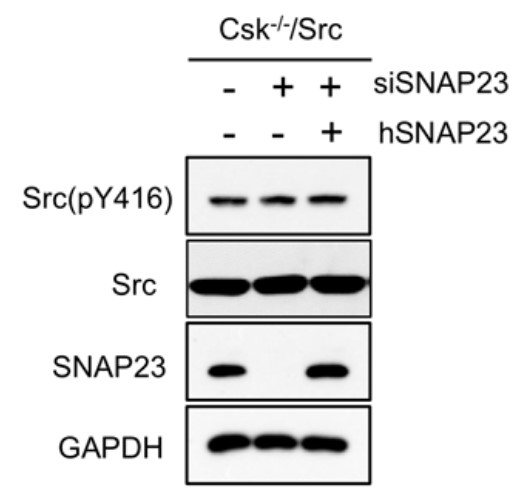
Fig1. Total cell lysate from c-Src transformed Csk−/− cells expressing control (−) or SNAP23 pooled siRNA (siSNAP23) with or without si-resistant human SNAP23.
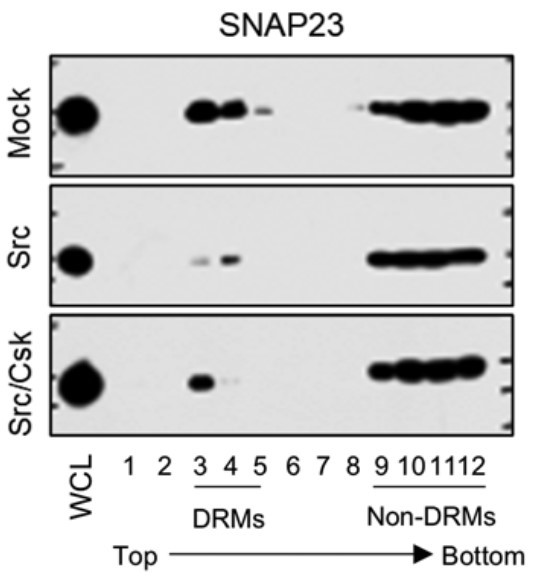
Case study 2: Qi Sun, 2016
Ovarian cancer (OC) was the primary malignant gynecological cancer and SNARE protein is closely related with tumor progression. Here, the researchers identified SNAP23, a member of SNARE complex, as a potential oncogene in OC. They determined the expression of SNAP23 in OC tissues and explored the clinical significance through bioinformatics analysis. The effects of SNAP23 on OC cell proliferation, migration, invasion, cell cycle and apoptosis were then evaluated in vitro. SNAP23 knock down increases cell apoptosis and inhibits cell proliferation, migration and invasion of OC cells. GO analysis reveals that most genes correlated highly with SNAP23 were enriched in metabolic process. These data suggest that SNAP23 may serve as an oncogene promoting tumorigenicity of OC cells by decreasing apoptotic process.
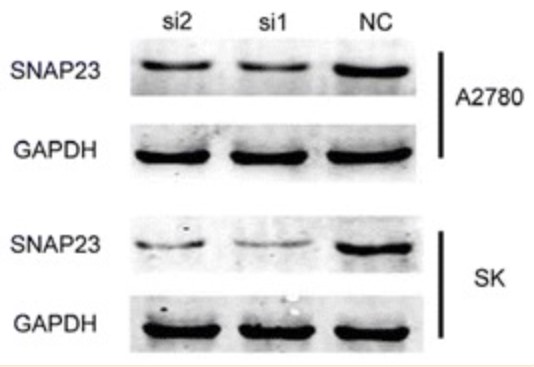
Fig3. Both of two designed siRNAs showed favorable inhibition, and siRNA1 had a better efficiency.
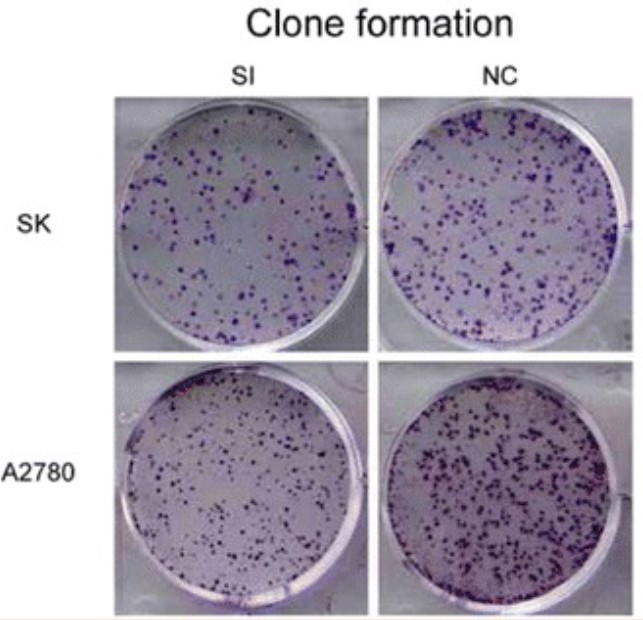
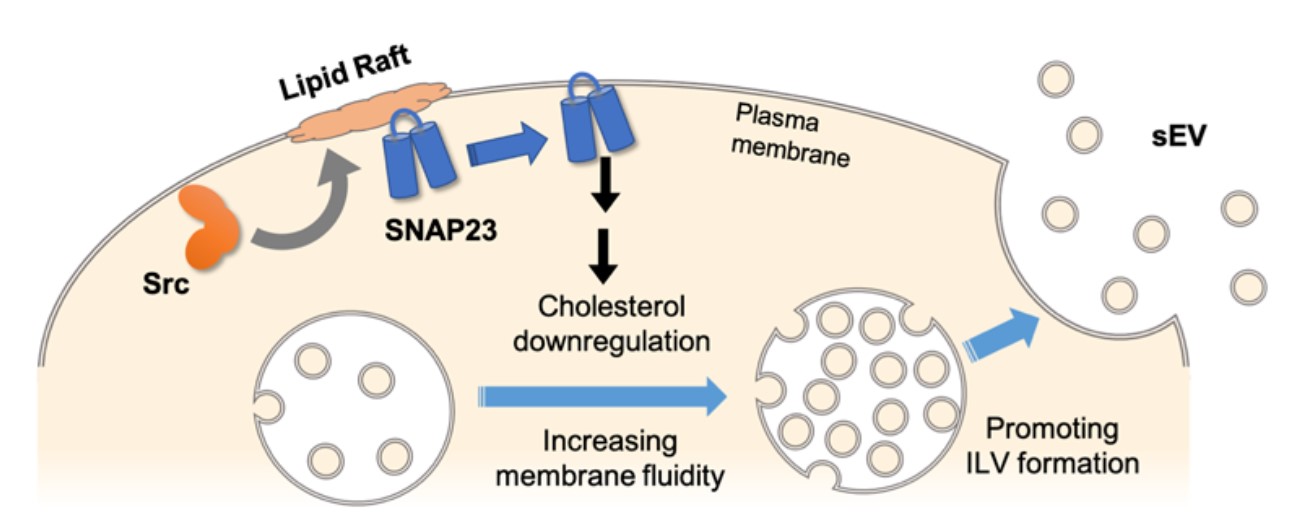
Fig1. Schematic model of SNAP23 role in regulating sEV production. (Fumie Mitani, 2022)
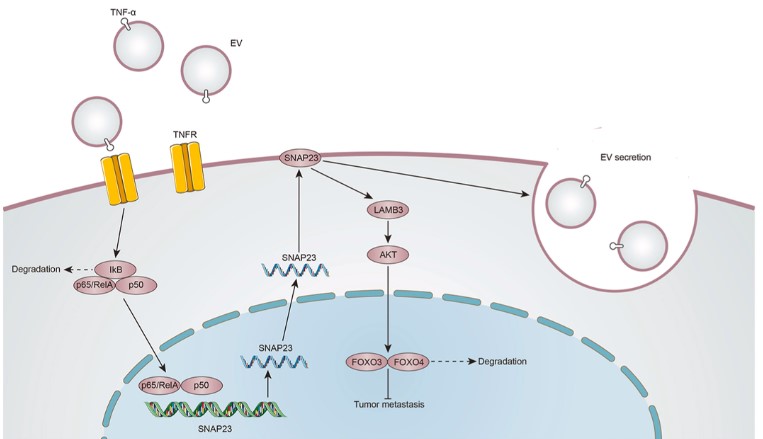
Fig2. Schematic illustration of the mechanism by which EV TNF-α promotes metastasis in CRC. (Bo-Wen Xie, 2023)
SNAP23 involved in several pathways and played different roles in them. We selected most pathways SNAP23 participated on our site, such as SNARE interactions in vesicular transport, Platelet activation, which may be useful for your reference. Also, other proteins which involved in the same pathway with SNAP23 were listed below. Creative BioMart supplied nearly all the proteins listed, you can search them on our site.
| Pathway Name | Pathway Related Protein |
|---|---|
| SNARE interactions in vesicular transport | GS15;SEC22B;STX19;BNIP1;STX11;STX11A;STX18;BET1L;VAMP4 |
| Platelet activation | RAP1B;FYN;ACTB;COL24A1;MAPK3;FCGR2A;MYL12A;PPP1CA;PIK3R5 |
SNAP23 has several biochemical functions, for example, SNAP receptor activity, protein binding, syntaxin binding. Some of the functions are cooperated with other proteins, some of the functions could acted by SNAP23 itself. We selected most functions SNAP23 had, and list some proteins which have the same functions with SNAP23. You can find most of the proteins on our site.
| Function | Related Protein |
|---|---|
| SNAP receptor activity | SEC22BA;STX4;SEC22A;STX19;VTI1A;STX6;STX12;STX1A;STX10 |
| protein binding | EIF2AK3;Ccl27a;PLXNB2;YAP1;FGF21;FANCB;CLK2;PI4K2A;LAMP2 |
| syntaxin binding | SYT7;SYT11B;SYT5A;NAPGA;SYT11;NAPB;TMED9;SYTL3;STXBP3A |
SNAP23 has direct interactions with proteins and molecules. Those interactions were detected by several methods such as yeast two hybrid, co-IP, pull-down and so on. We selected proteins and molecules interacted with SNAP23 here. Most of them are supplied by our site. Hope this information will be useful for your research of SNAP23.
STX11; VAMP3; NAPB; NAPA; ZDHHC17; NSF; VAMP7; PHF20L1
- Q&As
- Reviews
Q&As (6)
Ask a questionIn neurodegenerative diseases such as Alzheimer's disease, the expression level of SNAP23 may be reduced, which may affect the release of neurotransmitters and nerve signaling.
SNAP23 may influence neuronal death by regulating the fusion of synaptic vesicles and the release of neurotransmitters. Studies have shown that reducing the expression level of SNAP23 may increase the risk of neuronal death.
Recent studies have found that SNAP23 is associated with neuroinflammation. The level of expression of SNAP23 may affect the intensity and extent of the inflammatory response.
The interaction between SNAP23 and other proteins is regulated by the formation of complexes or the modulation of signal transduction pathways. These interactions can be influenced by a variety of factors, such as ion concentrations, neurotransmitters, and growth factors.
Recent studies have found that SNAP23 plays an important role in neurodegenerative diseases such as Alzheimer's disease. The study also found that SNAP23 expression levels were associated with neuroinflammation and neuronal death.
In addition to being involved in nerve signaling and neuronal death, SNAP23 may have effects on the nervous system in other ways. For example, SNAP23 may be involved in processes such as synaptic plasticity and learning and memory.
Customer Reviews (3)
Write a reviewThe pharmacodynamic parameters of SNAP23 were better.
SNAP23 has a strong desensitization potential to specific allergens.
SNAP23 has good compatibility and stability with various excipients.
Ask a Question for All SNAP23 Products
Required fields are marked with *
My Review for All SNAP23 Products
Required fields are marked with *


